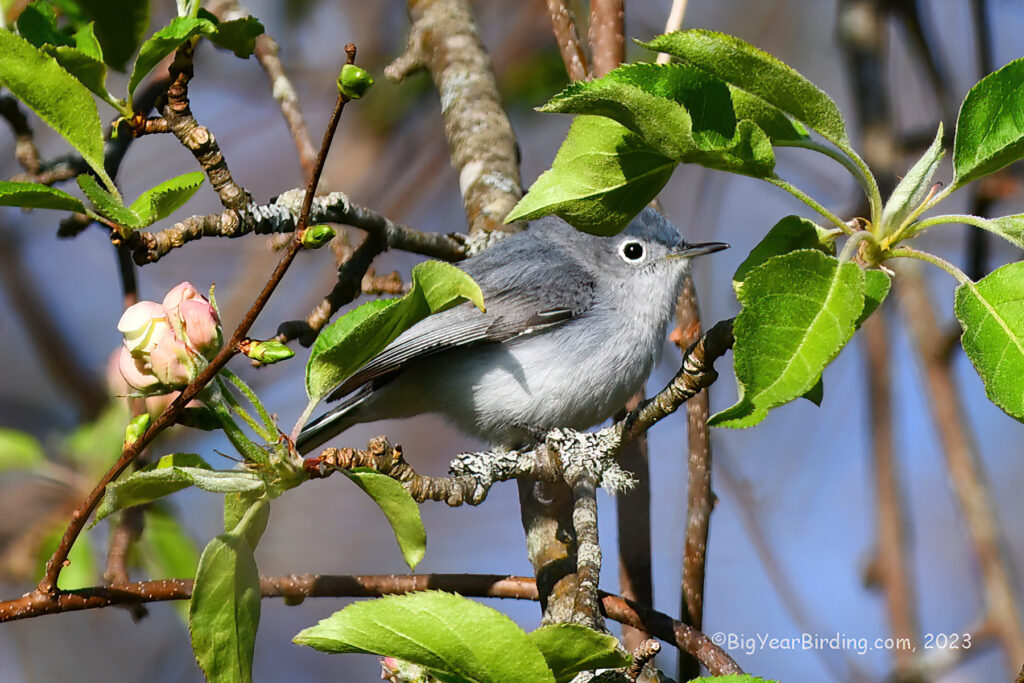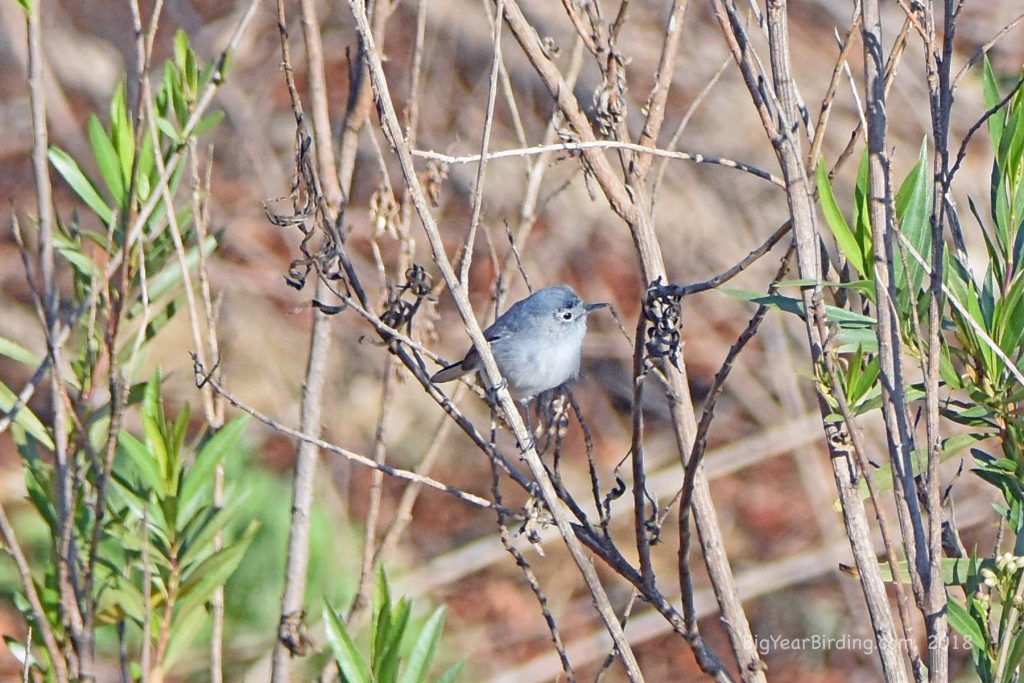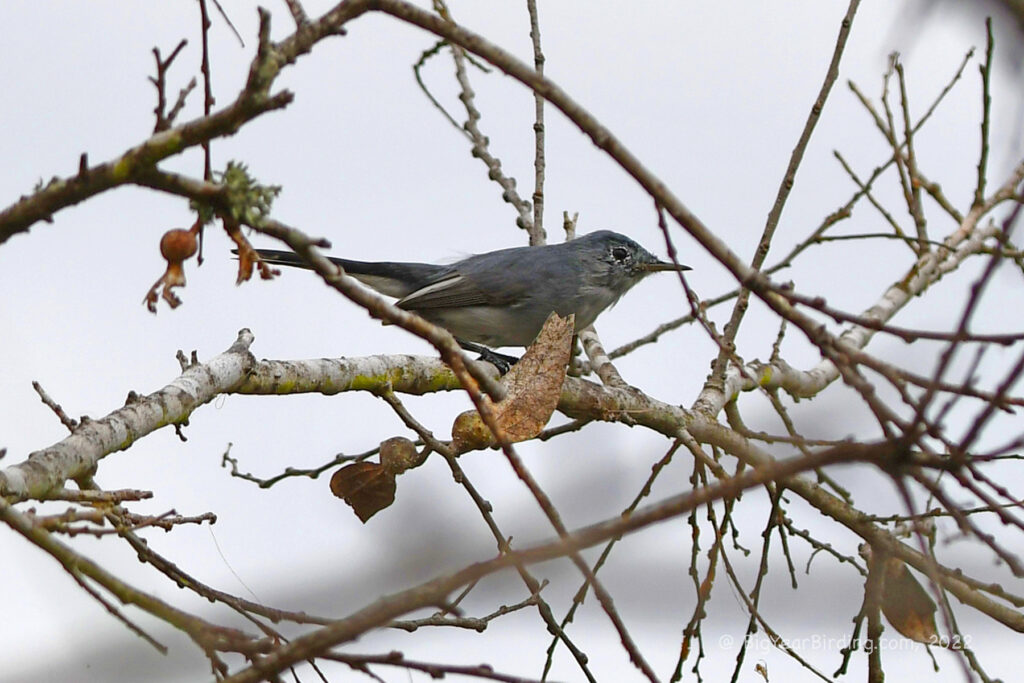
The Blue-gray Gnatcatcher (Polioptila caerulea) is a small, active bird that belongs to the family Polioptilidae. Adults measure approximately 4.3 inches (11 centimeters) in length and weigh around 0.2 ounces (6 grams), making them one of the smallest songbirds in North America. They have a slender bill, a long tail, and a distinctive blue-gray coloration on their upperparts, with a white throat and underparts.

One of the most distinguishing field marks of the Blue-gray Gnatcatcher is its habit of flicking its wings and tail rapidly while foraging for insects in the treetops. They have a white eye-ring and a long, thin, black tail with white outer tail feathers. Juveniles have a more muted coloration with a grayish-brown back and a yellowish wash on the underparts.

Blue-gray Gnatcatchers breed across much of eastern North America, including parts of the United States and southern Canada. During the breeding season, they inhabit deciduous and mixed woodlands, often near water. In the winter, they migrate to southern Mexico, Central America, and the Caribbean, where they can be found in a variety of wooded habitats, including tropical and subtropical forests.

While Blue-gray Gnatcatchers are not considered endangered or threatened, their populations have declined in some areas due to habitat loss and fragmentation. They are also vulnerable to brood parasitism by Brown-headed Cowbirds, which lay their eggs in the gnatcatcher’s nests. However, conservation efforts such as habitat preservation and restoration can help to support healthy populations of Blue-gray Gnatcatchers and other woodland birds.

